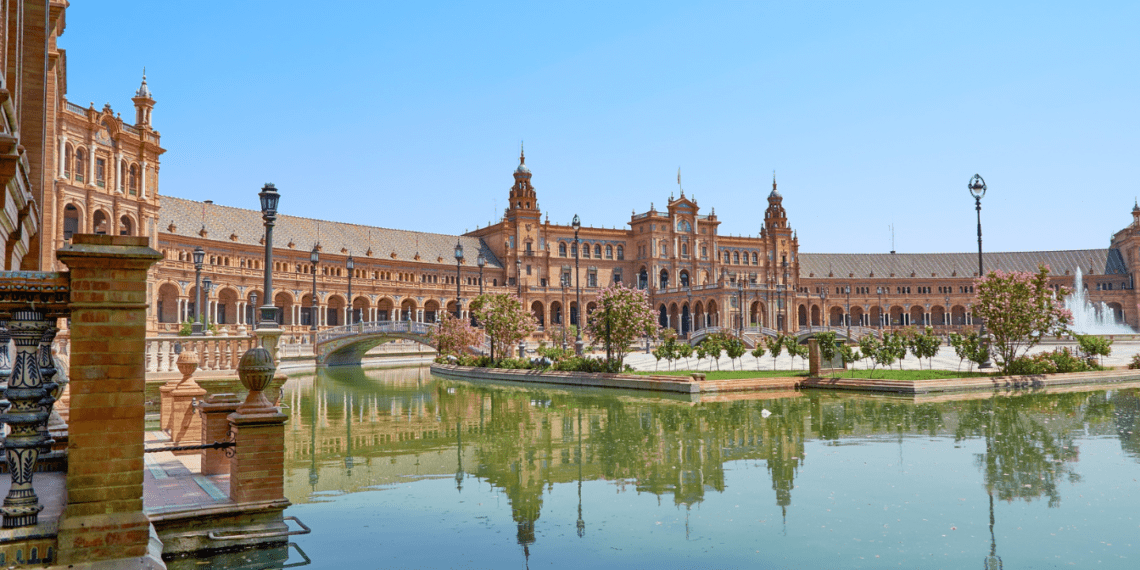Spain is at Europe’s southern tip, offering a mix of amazing landscapes and cultures. It ranges from skiing in the Pyrenees to relaxing on the Mediterranean’s sunny shores. This diversity creates a tapestry of travel adventures. Nature lovers find solace in its vast outdoor areas. Meanwhile, its cities, towns, and villages teem with historical treasures and local cuisine.
But Spain’s true beauty goes beyond its famous symbols like bulls and flamenco. It shines through its people and their lively spirit.
Key Takeaways
- Spain offers a diverse range of landscapes, from snow-capped mountains to sunny beaches.
- The country is rich in history, culture, and gastronomy, with storied cities and villages.
- Spain is home to a vibrant and welcoming people who embody the country’s true charm.
- Visitors can explore world-renowned attractions like the Alhambra, Sagrada Familia, and Camino de Santiago.
- Spain is an affordable and accessible destination for travelers looking to immerse themselves in a unique European experience.
What makes Spain so special for travelers worldwide? Let’s explore the ultimate guide to visiting Spain. We’ll reveal the hidden gems that make it a top spot for your next journey.
Best Times to Visit Spain
The best time to visit Spain is during spring and fall. April and May offer pleasant weather. There are also fewer people and prices are lower than in summer. The weather is warm but not too hot.
Visiting in Spring
Spring gives Spain a noticeable energy. Days are getting warmer. It’s perfect for city sightseeing, mountain hikes, and sunbathing. You can also see Spain’s biggest festivals.
Visiting in Summer
July and August are Spain’s busiest times. Cities can be very hot, but the North is cooler. Here, you won’t find as many tourists. Summer is also good for beach lovers.
Visiting in Autumn
September and October are great for a Spain visit. The weather is cooler after summer’s heat. You can still enjoy the beach and see beautiful autumn leaves.
Visiting in Winter
Spain’s winter is mild and sunny. There is snow in the mountains. The north gets a lot of rain. It’s a nice escape from colder countries.
Spring and fall have the best weather and prices. But Spain offers beauty and fun all year. So, any time can be a great time to visit.
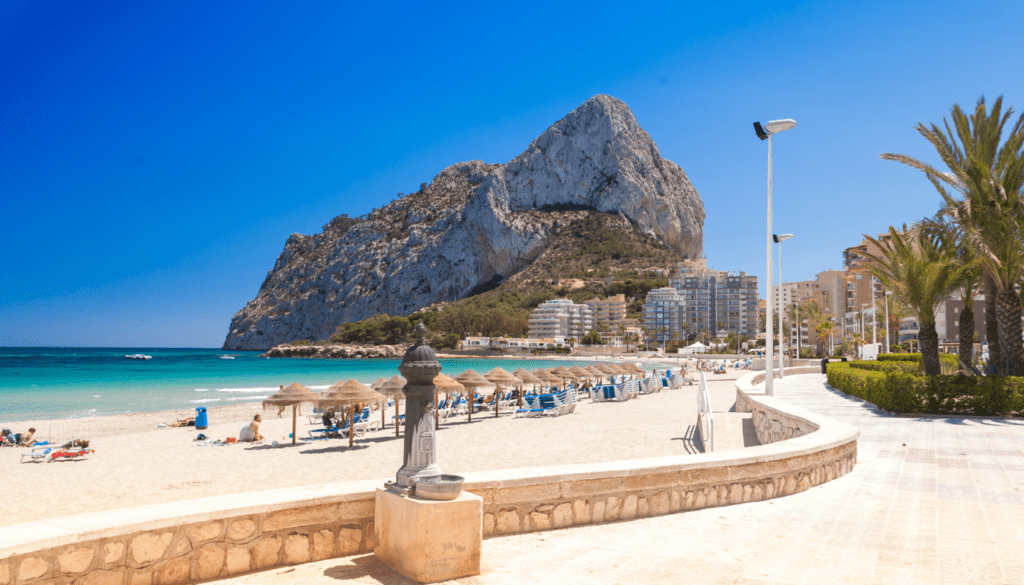
| Season | Best Time to Visit | Weather | Crowds | Prices |
|---|---|---|---|---|
| Spring | April-May | Mild, warming up | Smaller crowds | Lower prices |
| Summer | June-August | Hot, especially in the south | Peak crowds | Higher prices |
| Autumn | September-October | Milder, some rain | Smaller crowds | Lower prices |
| Winter | November-February | Mild in the south, cold and wet in the north | Smaller crowds | Lower prices |
“The best time to visit Spain is in the spring and fall when the weather is pleasant and crowds are smaller.”
How Long to Spend in Spain
When you’re getting ready for Spain, you might wonder: “How many days should I stay?” The answer depends on what you want to do. But, there are some tips that work for most travelers.
3–5 Days at a Minimum
12–15 Days for an Ideal Visit
The longer your stay, the more you’ll enjoy Spain. A 2-week visit is great for seeing many highlights and making memories. Be sure to plan well, see the top places, and keep some time for surprises.
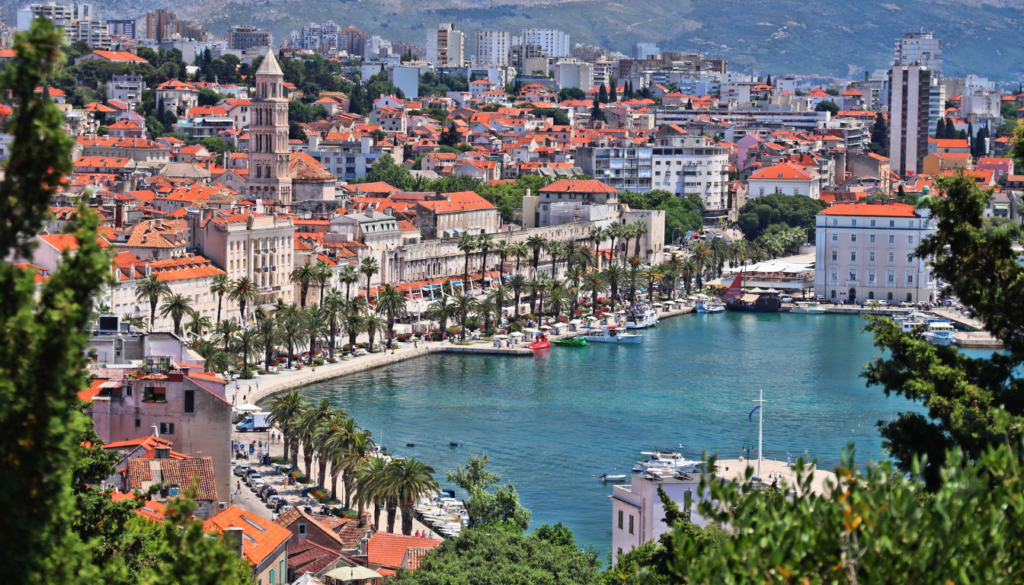
Getting to Spain
Traveling to Spain is smoother than before, thanks to simple transportation options from major global hubs. The main international airports are in Madrid and Barcelona, making them key entry points for visitors. But, if you’re traveling from Europe, you’ll find plenty of smaller airports across the country. Cities like Seville, Valencia, and Malaga have direct flights as well.
After arriving at a Spanish airport, you’ll find getting to your next stop simple. In Madrid, the best way to the city center is by train. In Barcelona, hop on the Aero Bus for a smooth and cost-effective ride to the city’s heart. It makes several stops along its route.

Whether you land in Spain’s capital or its next biggest city, using its extensive public transportation is easy. By planning a bit ahead, you can have a smooth journey to start your Spanish getaway.
Where to Visit on a First Trip
Spain is a captivating country with many destinations for first-time visitors. Cities like Madrid and Barcelona, and the gem of Seville await you. These are the best places to visit in Spain, showing off its cultural heritage, architecture, and food.
On a classic first-time trip, visit these three top Spain destinations. Spend about 3 days in Madrid. It’s known for art museums and plazas, and offers easy trips to Toledo and Segovia. Next, enjoy 2 days in Barcelona, seeing Gaudí’s work and the seaside. Finally, enjoy 2 days in Seville, with its Moorish design and flamenco.
If you have extra time, visit Granada for the Alhambra or San Sebastián for great food. These top Spain attractions add more to your cultural journey.
Your first trip to Spain will be amazing. Its great transport makes it easy to explore. You’ll find history, architecture, and food delights everywhere you go.

Choosing Your Transportation
Planning a trip to Spain? You’ll need to choose the best way to travel around. Luckily, Spain offers many ways to get from one place to another. You can drive on your own or use buses and trains. Each option has its benefits and challenges.
Driving in Spain
Want to see Spain on your own terms? Renting a car is a great choice. It’s perfect for visiting places off the beaten path. But, keep these points in mind when you drive in Spain:
- You must carry a valid primary driver’s license and an international driving permit (IDP) to drive in Spain.
- Spain’s law requires you to have certain safety items in your car. This includes a fluorescent jacket, two warning triangles, an extra pair of glasses (if you wear them), and a first-aid kit (recommended).
Required Permits and Gear
Don’t forget your license and IDP when driving in Spain. There’s also a list of things you must have with you:
- Fluorescent jacket for all occupants
- Two warning triangles
- An extra pair of glasses (if you wear them)
- Fire extinguisher (recommended)
- First-aid kit (recommended)
Driving Regulations
Knowing Spain’s driving rules is key to a smooth journey. Here are some important ones to remember:
- Speed limits: Vary from 50 km/h in towns to 120 km/h on expressways.
- Right-of-way rules: Traffic from the right has priority unless signs say otherwise.
- Passing restrictions: Passing is often not allowed on highways and in tunnels.
- Seatbelt and child seat requirements: Wear seatbelts, and use child seats as needed.
Obeying these rules will keep you out of trouble. Enjoy your time driving in Spain. Be safe and follow the local laws to avoid problems.

What to Pack for Spain
When you pack for Spain, the secret is to keep it simple and light. After many trips, I’ve found that a good packing list can really help. Let’s look at what you should include in your spain packing list.
Travel Essentials
- Passport, travel insurance, and flight tickets
- Smartphone, charger, and portable power bank
- Cash, credit/debit cards, and travel-friendly wallet
- Prescription medications and any necessary medical items
Clothing and Accessories
For what to bring to Spain, choose clothes that are easy to mix and match. Pick items that keep you comfy and cool. Check the weather before you go to know what to pack.
- Lightweight, quick-drying tops and t-shirts
- Comfortable, versatile bottoms like pants, shorts, and skirts
- Sweater or light jacket for cooler evenings
- Sturdy, broken-in walking shoes and sandals
- Sun protection like hats, sunglasses, and sunscreen
- Swimsuit and beach towel (if visiting coastal areas)
Travel Accessories
Don’t forget these spain travel essentials beside your clothes:
- Reusable water bottle to stay hydrated
- Compact, lightweight daypack for city exploration
- Travel adapter and converter for your electronics
- Phrasebook or translation app to help with communication
Pack things that do many jobs and go well with the weather. This way, you’ll be ready to enjoy Spain. And remember, pack light and smart.
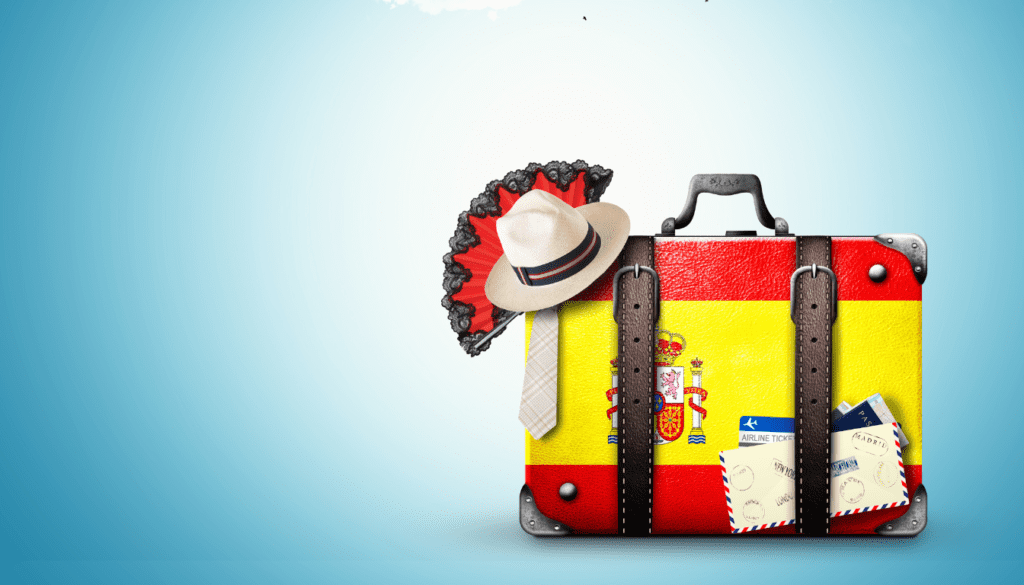
“Packing light is the key to a stress-free trip to Spain. With a well-curated list of essentials, you can focus on immersing yourself in the country’s rich history, vibrant cities, and stunning natural landscapes.”
Spain Entrance Requirements
Finding out about Spain’s entry rules is a key first step when you plan your trip. If you’re from the U.S., you mostly just need a valid passport for trips up to 90 days. But, there are a couple more things to think about before leaving.
You must complete a health declaration form before arriving. This gives Spanish officials info on your health and COVID-19 exposure. You might also need to show you’re vaccinated or have a recent negative COVID test.
Keeping current with the spain travel requirements is vital because they often change. Always check the official websites well before you leave. Doing this avoids problems at the border and makes sure you smoothly enter Spain.
If you’re not from the EU, like Canada, Australia, or the UK, you may face more steps. This could mean needing a spain visa or following new spain entry rules for the ETIAS visa waiver. These changes are for about 50 countries and start in 2023.
“Staying informed and prepared is the key to a seamless arrival in Spain.”
It’s wise for everyone to look into the latest spain travel requirements and get ready. This way, your visit to Spain can be a worry-free and fun journey.

Overview of Spain's Regions
Exploring the regions of Spain helps you see its full beauty. Each region, from north to south, is unique. You’ll find different cultures, foods, and fun things to do. Let’s look at what each part of Spain offers.
The north of Spain is green and cool, with places like the Basque Country, Asturias, and Galicia. The Basque Country has its own language and great food. It’s famous for its modern cuisine and Bilbao’s Guggenheim Museum.
Asturias and Galicia have beautiful Atlantic beaches and old fishing villages. They’re great for a quieter, less touristy visit.
The heart of Spain is its central region, with the lively Madrid as its capital. This area is a high plateau with historic cities. These cities, like Segovia, have old buildings that are very well kept. They show Spain’s rich history.
The area around Madrid has farms and vineyards. It’s where Don Quixote was inspired. You can see rolling landscapes and historic windmills.
Andalusia, in the south, is known for its classic Spanish culture. It has beautiful Moorish buildings, pretty white-washed villages, and Flamenco dancing. Cities like Seville, Córdoba, and Granada are amazing to visit. Each one has a special charm and lots of history.
Further south, the Costa del Sol has the Mediterranean Sea. It’s a place for sunny beaches and fun resort towns.
Northeastern Spain
Outside Barcelona, you have the Costa Brava coast and the Pyrenees mountains. They offer beautiful natural scenes for exploring.
Every part of Spain has its own story to tell. Whether you choose the north, central, south, or northeast, you’ll find amazing experiences. Spain has something special for all kinds of travelers.
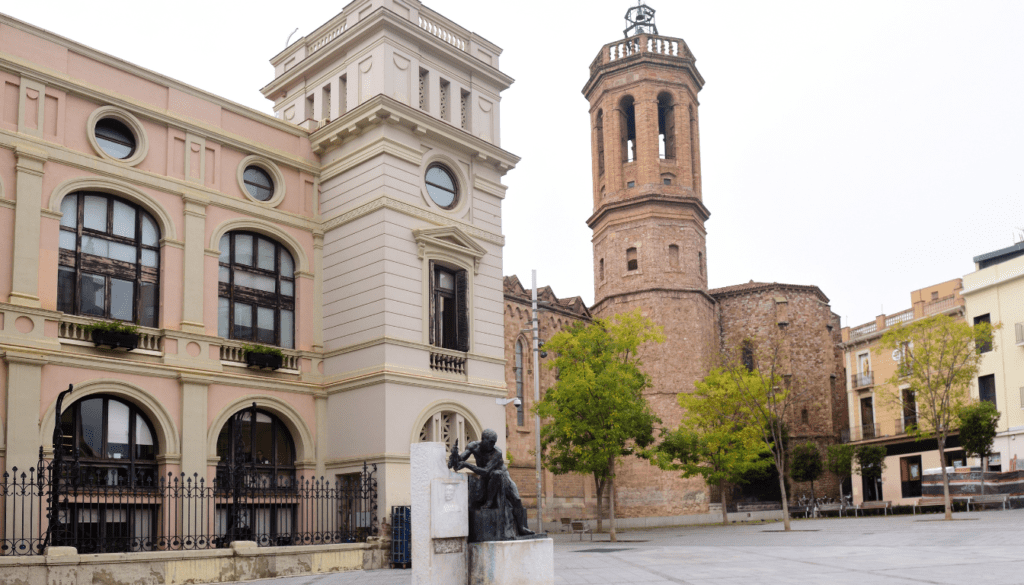
“Spain is not a country, it is a collection of small countries under a single umbrella.”
Accommodation in Spain
Looking for a place to stay in Spain offers many choices. You can pick from luxury hotels, cozy boutique hotels, budget hostels, and more. This wide range means there’s something for everyone, no matter their budget or style.
In big cities like Madrid, Barcelona, and Seville, you can find lots of upscale Spain hotels and vacation rentals. Websites like Airbnb list many options. For a longer trip, these places can give you a real feel for Spanish life. But, in smaller towns, your choices might be fewer. It’s smart to book early.
If you’re watching your spending, places like campsites and guesthouses can save you money. They’re especially common in spots like the Basque Country and Galicia. Staying in these Spain airbnbs can make you feel like a local. It’s a great way to dive into the local culture.
Wherever you stay, always check reviews and what’s offered. This helps make sure it meets your needs. With some research, you can find your ideal place to stay in Spain.
| Accommodation Type | Average Price Range |
|---|---|
| Hostels | €25 – €45 per night |
| Budget Hotels | €100 – €150 per night |
| Mid-Range Hotels | €150 – €200 per night |
| Luxury Hotels | €250+ per night |
| Vacation Rentals (Airbnb) | €50 – €150+ per night |
| Paradores (Historic Lodges) | Around €110 per night |
| Rural Houses (Casas Rurales) | €30+ per person per night |

It’s crucial to know that Spain’s accommodation prices can change a lot. This depends on where you’re staying, the type of place, and the time of year. Areas by the coast might ask for a minimum week stay in high season. In cities like Madrid, prices can drop in August. And if you’re headed to the beach, summer is the busiest time.
When choosing your stay in Spain, think about what matters to you. Look at things like how easy it is to get around, the neighborhood, and if it might be noisy. This can help make your trip just right.
Is Spain Expensive? Average Travel Costs
Spain offers affordable travel, more so than Western Europe. But, costs can change based on where, when, and how you travel. Cities like Madrid and Barcelona are pricier. In contrast, smaller areas are more budget-friendly.
For those on a tight budget, $50-100 a day is reasonable. This covers hostels, local food, and getting around. If you prefer more comfort, plan for $100-200 daily. Want luxury? Be ready to spend over $300 each day. With some careful thought, managing your Spain prices is possible.
| Expense | Budget Traveler | Midrange Traveler | Luxury Traveler |
|---|---|---|---|
| Accommodations | $25-65 per night | $100-200 per night | $200+ per night |
| Meals | $15-35 per day | $30-60 per day | $60+ per day |
| Local Transportation | $20-30 per day | $25-40 per day | $30-50 per day |
| Activities | $25-45 per day | $40-75 per day | $75+ per day |
| Total Daily Budget | $50-100 per day | $100-200 per day | $300+ per day |
The best times to go are in autumn to early winter and late winter to spring. Specifically, late September to early December and January to March are the cheapest. Planning your trip then can save a lot on your journey’s costs in Spain.

Paying for Things and Using Credit Cards
In Spain, handling money is mostly easy. Remember, the Euro is used there. You’ll exchange your currency or get cash from ATMs.
ATMs are all around Spain, even in small areas. Visa and Mastercard are common and work at most places. Tell your bank you’re going to Spain to avoid card issues.
But, always keep some cash since not all places take cards, especially in the countryside. Watch out for fees when you use your card in Spain. Swapping between the Euro and your currency is simple there.
Recommended Credit Cards for Travel to Spain
- Capital One VentureOne Rewards Credit Card – Offers a 20,000 miles welcome bonus for $500 spend.
- Capital One Venture Rewards Credit Card – Offers a 75,000 miles welcome bonus for $4,000 spend.
- Bilt World Elite Mastercard® – Provides double points on specific spending categories.
- Capital One Quicksilver Cash Rewards Credit Card – Gives a $200 cash bonus for $500 spend.
- Betterment Checking – Reimburses international ATM and foreign transaction fees.
In Spain, Visa and Mastercard work well. American Express is next, but Discover might not be taken. Having cash, debit, and various cards is smart. It helps in any payment situation while you’re in Spain.
| Credit Card | Welcome Bonus | Notable Features |
|---|---|---|
| Capital One VentureOne Rewards | 20,000 miles for $500 spend | No annual fee, 1.25x miles per $1 spent |
| Capital One Venture Rewards | 75,000 miles for $4,000 spend | 2x miles per $1 spent, $95 annual fee |
| Bilt World Elite Mastercard® | N/A | 2x points on rent, 1x on other purchases |
| Capital One Quicksilver Cash Rewards | $200 for $500 spend | 1.5% cash back on all purchases, no annual fee |
| Betterment Checking | N/A | Reimburses international ATM and foreign transaction fees |

Safety
When you plan a trip to Spain, safety is a key concern. The good part is that Spain ranks among Europe’s safer countries for tourists. The crime rate is low, and violent crimes are very rare. Still, keep an eye out for scams and petty theft, particularly in busy places.
In Spain, pickpockets pose the biggest risk. They work in teams, preying on tourists and stealing wallets and phones. To stay safe, secure your valuables and limit how much cash you carry. Avoid wearing flashy jewelry and walking alone in the dark.
| Common Scams in Spain | Tips to Stay Safe |
|---|---|
|
|
Spain, in general, is secure for travelers. Use your common sense to stay safe and enjoy your trip. For more on travel safety in Spain, visit Spain Traveller, Lonely Planet, and AXA Schengen.
“Spain is one of the safest countries in Europe for tourists, with a very low rate of violent crime. However, petty theft and scams are still something to be aware of, especially in crowded areas.”
Assorted Spain Travel Tips
As you prepare for your Spain journey, here are some extra tips to enhance your visit:
- Learn a few Spanish phrases before you leave. It can help you connect with the locals.
- To feel Spain’s culture, catch a flamenco show and enjoy tapas in the local bars.
- Use Spain’s excellent public transportation system to move around easily.
- Be ready for long siestas in the afternoon. Many shops close then.
- Explore beyond the main tourist spots. You’ll find smaller towns and villages full of charm.
- Adapt to Spain’s laid-back pace of life and enjoy the relaxing vibe.
With some planning and being open-minded, you can have an amazing spain travel adventure. Dive into the culture, taste the great food, and enjoy the sunny views of Spain. This will make your trip unforgettable.
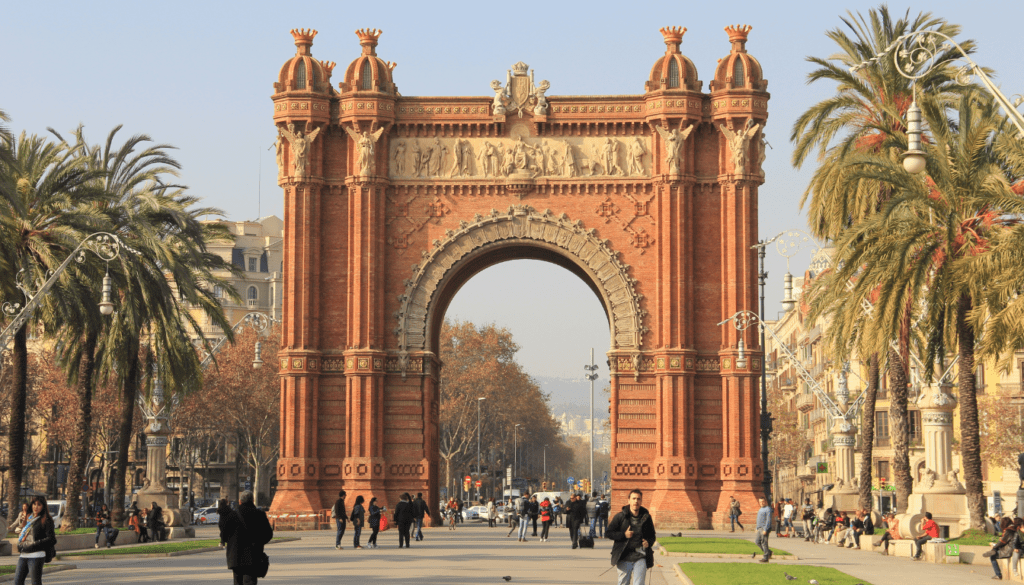
“Traveling – it leaves you speechless, then turns you into a storyteller.” – Ibn Battuta
Get your things ready, review your spain travel tips, and be prepared for exciting memories in this stunning place.
Spain Itineraries
Planning a dream Spain vacation? Let me offer some sample itineraries. They’ll help you enjoy your time in this amazing country. Whether you’re staying for a week or three, there are many ways to have an unforgettable trip. You can choose from many Spain trip ideas based on your interests and how you like to travel.
If you have three weeks to spend, consider visiting Spain’s major cities. These include Madrid, Barcelona, Seville, Granada, and Toledo. You could stay in some cities for 3 days and others for over 2 weeks. Don’t forget the famous Camino de Santiago pilgrimage route. This plan allows you to travel by efficient trains or rent a car for more flexibility. It covers a lot of Spain’s diverse regions and things to see.
Got about 2 weeks? Focus on the highlights like Barcelona, Madrid, and Andalucía, with a few day trips. My 14-day Spain itinerary suggests spending 3 days in Barcelona, visiting Toledo from Madrid, and exploring Granada and Seville. For a shorter trip of 7 to 10 days, you should stay longer in fewer places. This way, you can really soak up the local culture and history.
FAQ
What is the best time of year to visit Spain?
The best time to visit Spain is in the Spring. April and May are ideal. Temperatures are just right, rainfall is less, and you’ll avoid big crowds.
How long should I plan to spend in Spain?
If you want to see main cities, plan for 3-5 days. But for a complete experience, spending 2 weeks is best.
What is the best way to get around Spain?
Spain’s high-speed rail links major cities well. It’s affordable and easy to use. You can also rent a car. But, know the driving rules and permits you might need.
What do I need to know before driving in Spain?
To drive in Spain, you’ll need your usual license and an International Driving Permit. Also, carry a fluorescent jacket and warning triangles for safety.
What should I pack for a trip to Spain?
When packing for Spain, bring adapters, comfortable clothes, and sunblock. Don’t forget medications and a water bottle. Add a charger and a translation guide or app too.
What are the entry requirements for visiting Spain?
US, Canada, Australia, and many European countries’ visitors need only a passport. For trips up to 90 days. You also have to fill out a health form before arrival. Some may need to show vaccine or negative COVID tests.
How expensive is travel in Spain?
Spain is seen as an affordable place to visit. A budget traveler might spend -0 a day. Those looking for luxury could spend over 0 a day. Costs change depending on the region and how you travel.
Is Spain a safe country to visit?
Spain is one of Europe’s safest countries for tourists. The risk of crime is low. But watch out for scams and pickpocketing, especially in busy spots.





















